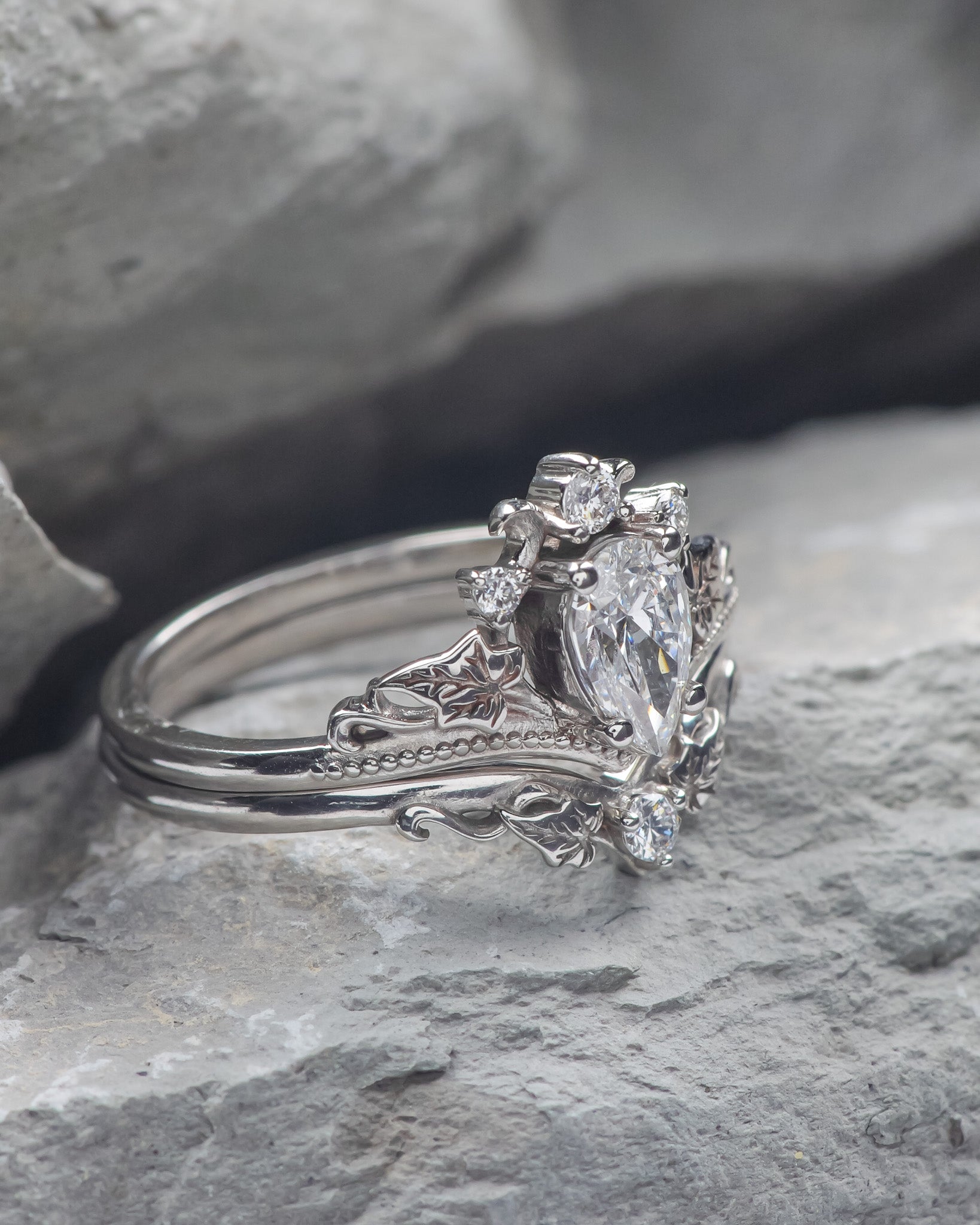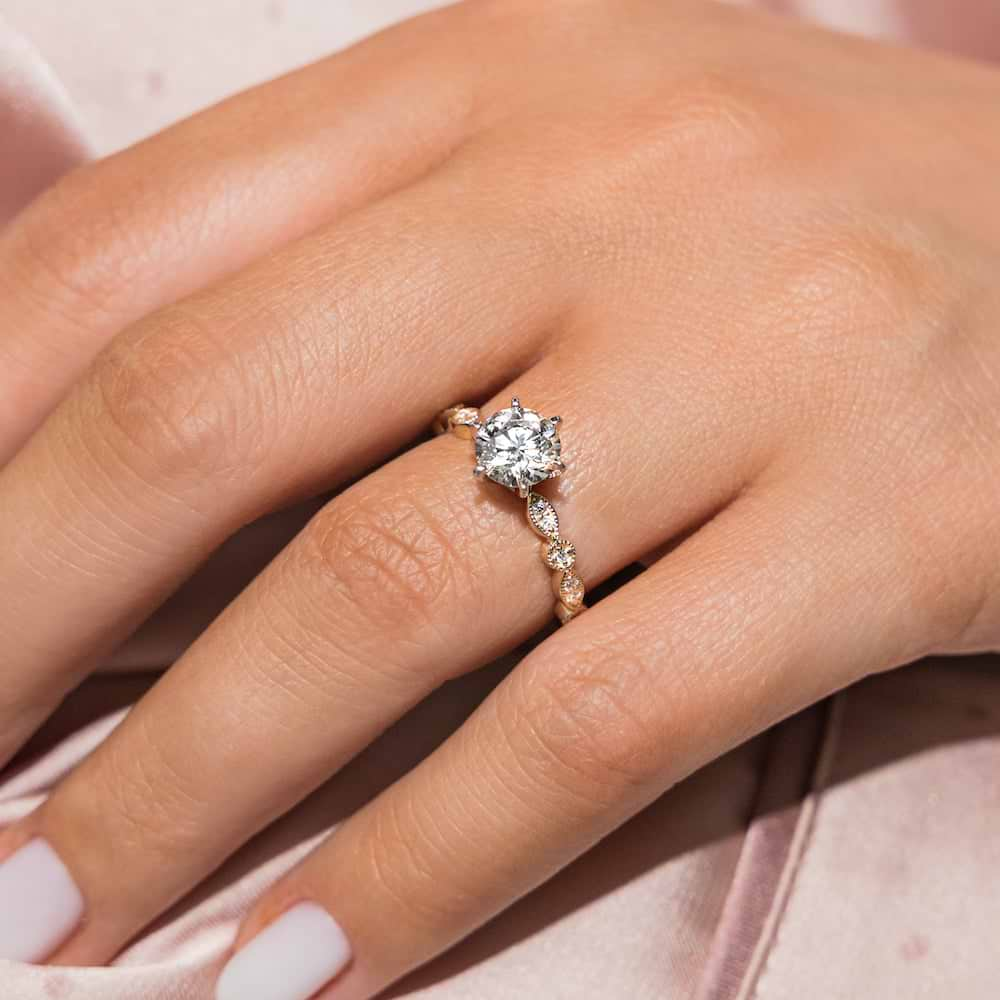What Gemologists Say About the Quality of lab grown diamond engagement rings
Why Lab Grown Diamond Involvement Rings Are the Perfect Choice for Eco-Conscious Couples
Lab-grown Diamond involvement rings provide an engaging option for pairs that focus on sustainability. These rubies use a striking alternative to traditional extracted rocks, substantially decreasing environmental damage. They are produced utilizing innovative techniques that assure both top quality and luster. As understanding of honest sourcing expands, lots of couples are reevaluating their options. What ramifications does this change have for the future of the Diamond industry?

The Environmental Effect of Conventional Diamond Mining
Although Diamond mining has actually long been celebrated for its attraction and prestige, the environmental consequences of traditional mining techniques are increasingly worrying. The removal of diamonds often entails comprehensive land interruption, bring about logging and environment loss for many varieties. In addition, the process consumes huge quantities of water, which can deplete neighborhood resources and negatively affect bordering communities. Hazardous chemicals made use of in mining operations can pollute nearby water resources, better endangering both human populaces and wildlife.
Moreover, the carbon footprint associated with moving mined diamonds contributes to the general environmental toll. The hefty equipment and devices needed for mining procedures contribute greatly to greenhouse gas emissions. As understanding of these concerns grows, numerous customers are starting to question the sustainability of standard Diamond sourcing. This shift in viewpoint highlights the immediate need for more eco friendly alternatives, such as lab-grown diamonds, which guarantee to lower the ecological impact while preserving the beauty and value of Diamond fashion jewelry.
The Refine of Creating Lab-Grown Diamonds
Lab-grown rubies are developed with two main methods: High Pressure High Temperature (HPHT) and Chemical Vapor Deposition (CVD) The HPHT process mimics the all-natural problems under which rubies form in the Earth's mantle. It includes subjecting carbon to extreme stress and temperature level, causing the condensation of carbon atoms right into Diamond structures. On the other hand, the CVD technique permits for the growth of rubies in a regulated environment. This strategy makes use of a gas mixture including carbon, which is invigorated to create plasma, enabling carbon atoms to deposit onto a substratum and grow layer by layer into Diamond crystals.
Both techniques generate diamonds that are chemically and literally identical to all-natural rubies - lab grown diamond engagement rings. The option of method commonly depends on the wanted attributes and size of the last treasure. This ingenious strategy to Diamond development not only provides a sustainable option but additionally allows for higher transparency in the sourcing of products
Quality and Brilliance of Lab-Grown Diamonds
While lots of might presume that lab-grown rubies differ in top quality from their all-natural counterparts, they actually display similar sparkle and visual charm. Lab-grown diamonds are created utilizing advanced innovation that reproduces the natural conditions under which rubies form, leading to rocks that have the same physical and chemical residential properties. These diamonds achieve the exact same exceptional quality and shade grading as extracted rubies, making them indistinguishable to the nude eye.
In terms of brilliance, lab-grown rubies typically show exceptional light performance as a result of their precision-cut aspects. The strenuous top quality control during manufacturing assurances that these rubies satisfy high requirements, boosting their aesthetic allure. In addition, they are available in a range of sizes and shapes, permitting pairs to find the perfect ring to match their individual design. Ultimately, lab-grown diamonds supply a splendid combination of beauty and high quality, making them an appealing choice for engagement rings.
Ethical Factors To Consider in the Diamond Industry
As consumers come to be significantly knowledgeable about the ethical ramifications surrounding Diamond sourcing, the conversation around the Diamond market has moved considerably. Issues concerning dispute rubies, often referred to as "blood diamonds," have prompted require greater transparency and accountability in mining techniques. These diamonds are mined in battle zone and sold to fund armed dispute, increasing serious moral inquiries for consumers. Furthermore, the environmental effect of conventional Diamond mining has come under analysis, with problems such as environment destruction and water pollution regularly highlighted.
In action, several have actually transformed to lab-grown rubies as an extra ethical choice. These stones are produced in regulated atmospheres, removing the risks related to mining. Subsequently, lab-grown rubies attract consumers looking for to make liable options that straighten with their values. The expanding need for ethical methods continues to reshape the Diamond market, pushing for humane and sustainable sourcing methods.
Cost-Effectiveness of Lab-Grown Diamonds
Lab-grown diamonds provide an engaging choice for consumers looking for economical engagement rings - lab grown diamond engagement rings. Priced significantly less than their natural equivalents, they give superb value for cash without giving up high quality or look. This price makes lab-grown rubies an eye-catching choice for budget-conscious couples
Reduced Rate Factor
Numerous couples are discovering that selecting lab-grown Diamond engagement rings can substantially reduce their general expenses without giving up quality or beauty. These diamonds normally set you back 30% to 50% less than their mined equivalents, making them an attractive choice for budget-conscious customers. The cost benefit occurs from reduced manufacturing prices and a more reliable supply chain, which eliminates the costs related to mining. Because of this, couples can invest in larger rocks or even more elaborate setups, boosting the overall visual of their rings. This price not our website only enables a much more tailored selection however additionally lines up with the worths of eco-conscious couples that focus on sustainability while staying financially wise. Lab-grown rubies offer an ideal mix of elegance and economy.
Worth for Money
The cost-effectiveness of lab-grown diamonds prolongs past their preliminary price, using outstanding value for money. Unlike all-natural diamonds, lab-grown choices can be as much as 40% more economical while maintaining the exact same physical and chemical buildings. This cost allows pairs to buy bigger or higher-quality rocks without surpassing their spending plans. In addition, the resale value of lab-grown diamonds is gradually enhancing, making them a more sensible option for future economic factors to consider. Furthermore, lab-grown diamonds typically feature reduced moral and ecological expenses, giving pairs with peace of mind. By picking lab-grown rubies, eco-conscious couples not just save money but also add to lasting methods, enhancing their overall worth proposal in the precious jewelry market.

Modification Options for Lab-Grown Engagement Rings
Exactly how can couples ensure their interaction ring reflects their unique love story? Customization choices for lab-grown Diamond interaction rings give a suitable option. Couples can pick from numerous Diamond forms, including round, princess, or oblong, allowing them to pick a design that reverberates with their individual aesthetic.
Furthermore, they can choose the setup-- be it jewelry, halo, or vintage-inspired-- making sure the ring matches the Diamond's luster. Metal selections, such as white gold, yellow gold, or increased gold, additionally enhance personalization, dealing with private tastes.
Pairs can integrate purposeful inscriptions, including a nostalgic touch that signifies their bond. With these comprehensive customization choices, lab-grown Diamond engagement rings not just embody a couple's love however likewise mirror their values, making them an ideal choice for eco-conscious partnerships. Eventually, these rings become a true representation of their one-of-a-kind trip together.
Regularly Asked Inquiries
Exactly How Do Lab-Grown Diamonds Contrast to Natural Diamonds in Value?
Lab-grown rubies normally cost 20-40% much less than natural diamonds, offering similar top quality and look. Their lower rate factor makes them an enticing alternative, particularly for budget-conscious customers seeking sustainable and moral options in precious jewelry.

Are Lab-Grown Diamonds Much More Durable Than Natural Diamonds?
Lab-grown rubies have the same physical and chemical residential or commercial properties as natural diamonds, consisting of durability. Both types score an ideal 10 on the Mohs range, making sure that lab-grown diamonds are equally resistant to scratching and damages.
Can Lab-Grown Diamonds Be Re-selled Conveniently?
Lab-grown diamonds can be resold, yet their market demand varies contrasted to natural rubies. While some customers value their moral origins, others might favor all-natural alternatives, potentially impacting resale value and convenience of purchase.
What Are the Care Directions for Lab-Grown Diamonds?
Lab-grown rubies call for routine treatment to preserve their luster. Cleaning with mild soap and cozy water, making use of a soft brush, and preventing extreme chemicals will certainly help protect their shimmer and integrity for many years ahead.
Exist Any Type Of Certifications for Lab-Grown Diamonds?
Lab-grown rubies can be certified by trusted companies such as the Gemological Institute of America (GIA) and the International Gemological Institute (IGI) These accreditations assure quality, adherence, and authenticity to market standards for lab-created gemstones.
Both techniques create rubies that are chemically and physically identical to natural diamonds. Lab-grown rubies are produced making use of advanced innovation Our site that duplicates the natural conditions under which diamonds create, resulting in stones that have identical physical and chemical properties. Lab-grown diamonds normally set you back 20-40% less than natural diamonds, offering comparable high quality and look. Lab-grown diamonds have the exact same physical and chemical properties as natural read rubies, including longevity. Lab-grown rubies can be resold, but their market demand differs compared to natural rubies.